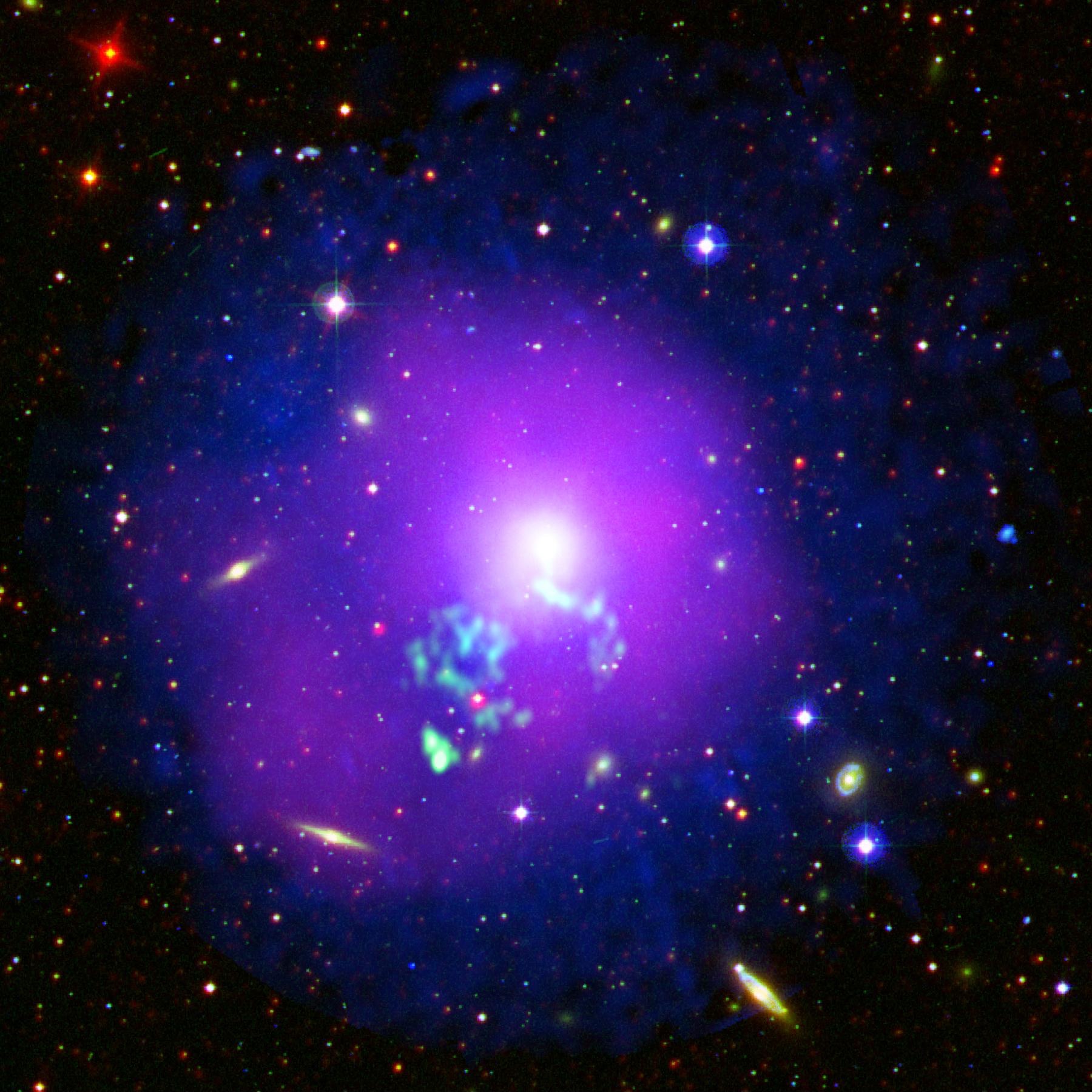XMM-Newton Special Exhibit
Sloshing Gas in a Galaxy Cluster
Galaxies are often found in groups, such as the group NGC 5044, which is named after the very large elliptical galaxy at its center. Galaxy groups are permeated by clouds of very hot gas that emit X-rays visible to the XMM-Newton telescope. An XMM image of the group, combined with images from the Digitized Sky Survey (at optical wavelengths) and NASA's WISE (infrared wavelengths), GALEX (ultraviolet wavelengths), and the Giant Metrewave Telescope (radio wavelengths) tells the history of the group.

Multiwavelength view of NGC 5044 shown using a combination of WISE infrared, Digitized Sky Survey optical, Galex near-ultraviolet images. XMM-Newton (blue), and Giant Metrewave Telescope (green). (Image Credit: E. O'Sullivan and ESA)
The hot gas is shown in blue, and iron atoms, made from supernovae in the galaxies but that got spewed out are in purple. Even hotter material, visible in radio waves, is shown in green. The green filament is a leftover from when the supermassive black hole at the center of the elliptical galaxy NGC 5044 was active and had jets.
If you have very sharp eyes, you might notice that the hot gas is not evenly distributed – there is a large bit in the upper right of the image, and a small bit in the lower left. This is likely because the gas is "sloshing" from a collision with another galaxy – the spiral galaxy NGC 5054 (not visible here, it is beyond the lower left corner) – when it passed through the center of the group several million years ago. It is possible that NGC 5054's passage gave rise to the green radio filament's twisted shape.
Published: September 2016
Text Reviewed: September 2018


